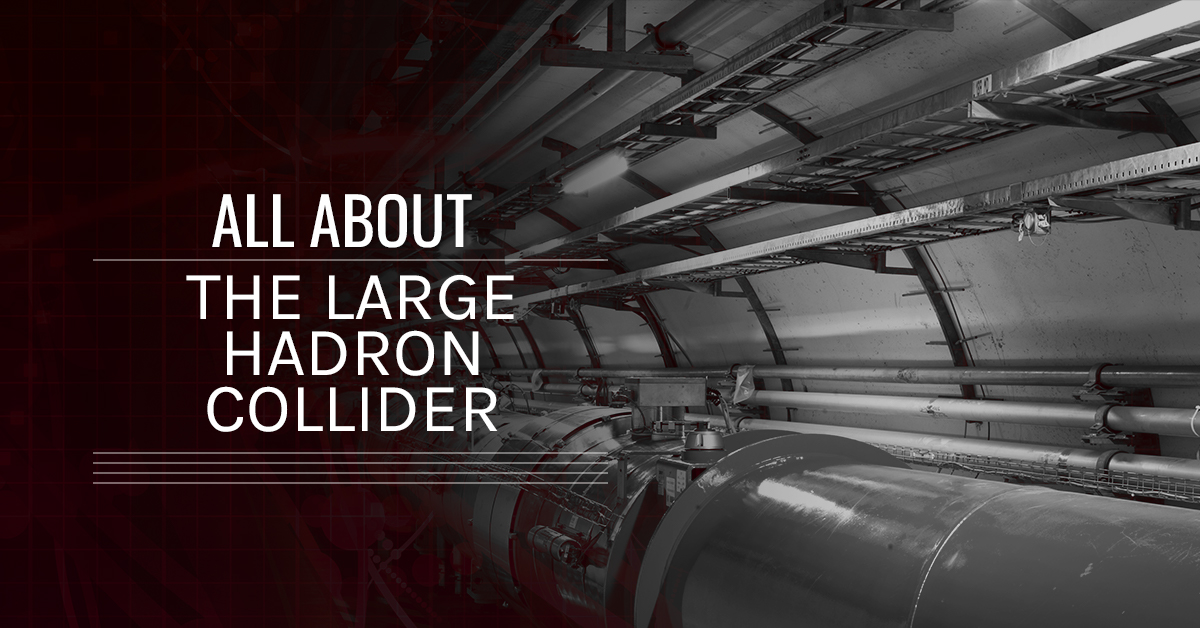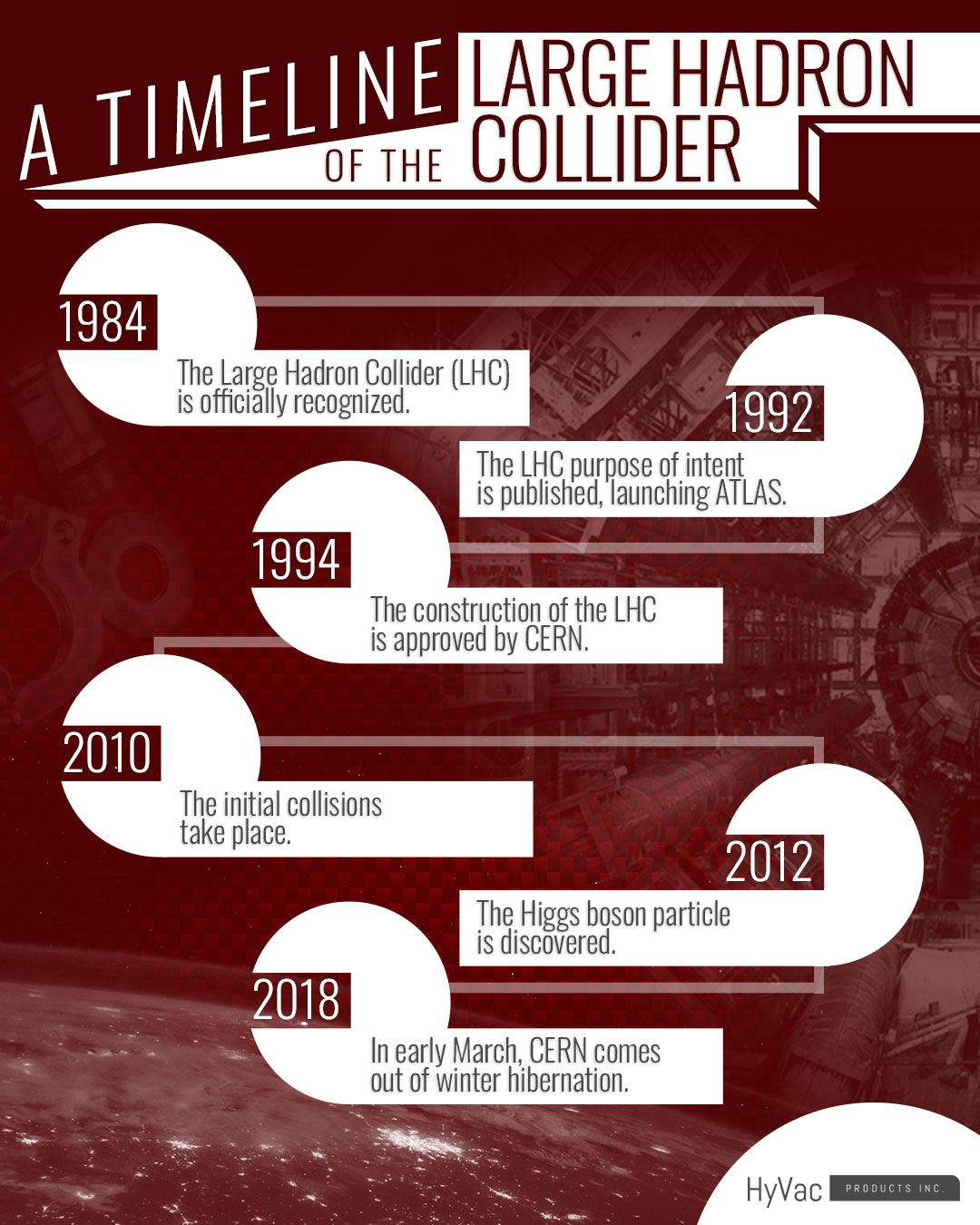Science Friday: All About the Large Hadron Collider
Mar 23rd 2018

At HyVac, our vacuum parts and vacuum fittings may seem quite ordinary, but they are contributing to the best in science and technology breakthroughs! We offer all the parts and pieces that collectively comprise the ultra high vacuum (UHV) chamber, like vacuum nipples, vacuum clamps, and the various nw16 through nw50 sizes. A UHV is utilized in many scientific experiments and research studies, and in this edition of Science Friday, we’ll navigate the thrilling world of physics and the Large Hadron Collider (LHC).
A Little Explanation First…
Although many understand the basic concept of the LHC, we’re going to expand and really hit home what it is and what it means for science. The LHC is the largest and most energetic particle accelerator in the world. It is an underground ring-shaped tunnel that is 17 miles long and upwards of 175 meters underground. But we’ll back-track for a moment and explain the particle accelerator. The first particle accelerator was incepted in the 1930s with the purpose of exploring the architecture of an atomic nucleus, and has expanded to explore many particles. They beautifully operate by increasing and speeding up a particle beam of energy by creating electrical grounds to speed particles to direct and guide them to a particular focal point.
The LHC magnetically conducts a superring at 27-kilometers to lead the particles. Within the accelerator, two particle beams are built to collide near the speed of light and travel in opposite directions until they meet and then collide. This is where the UHV comes into play! Two tubes are kept at UHV and are guided around the ring by superconducting electromagnets. Throughout this process many different types and strengths of magnets are used to direct the beams, and a final one before they collide help to hug the particles more closely together to secure the accuracy of the collision.
The LHC is housed at CERN, just outside of Geneva, Switzerland.

Why is the LHC Important?
The LHC is important because as the beams continue to collide with increased energy speeds and accuracy, the more we know about what is unknown. New particles have been discovered as a result of the LHC, most notably the Higgs boson. In our next Science Friday, we’ll look more closely at the Higgs boson, so stay tuned!
The whole purpose of the LHC was to find the missing puzzle piece in the Standard Model of particle physics. This model theorizes the Universe is composed of basic building blocks — fundamental particles — that govern it accordingly. The LHC can then register new and unknown scenarios to try and decipher how classical and quantum physics can fit into a part of the puzzle together.

Now that we’ve unearthed the mystery of how HyVac components such as vacuum nipples and hose fittings help support UHVs, similar to those in the LHC, it makes the science all the more interesting! In this edition of Science Friday, we learned the LHC is the largest particle accelerator in the world that focuses beams that travel in opposite directions to collide creating new particles that may help to solve unknown Universal events and marry classical and quantum physics once and for all!
For science explorations that require ultra-high vacuum conditions, turn to HyVac, the authority in vacuum fittings and vacuum parts!